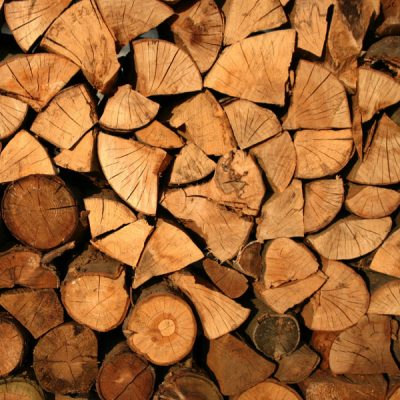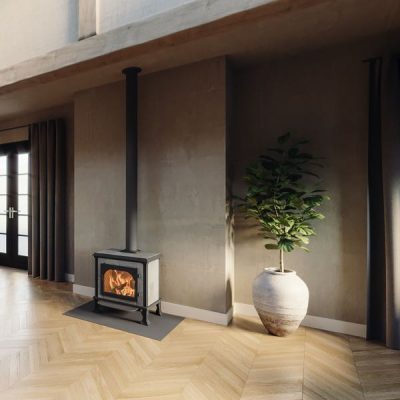From the moment the fire in the stove is burning steadily, it will start releasing its heat. The way this heat is distributed may vary from stove to stove. For example, an Altech soapstone stove yields a different kind of heat than a normal wood-burning stove. The type of heat that suits you best is a personal preference. This is something that is best experienced in practice.
Most people are not aware of the fact that the types of heat yielded by wood-burning stoves may differ. However, a clear distinction can be made between three types of heat: radiation heat, convection heat and accumulated heat (soapstone stoves). Before we dive into these differences, we will first explain how an Altech soapstone stove works exactly.
How does an Altech soapstone stove work?
Before the first use, the wood-burning stove should always be gently preheated 10 times. Afterwards, the wood-burning stove can be used normally. If used correctly, 80-85% of the heat produced will be released into the space in which the stove is located. Over half of this heat is released after the fire has been extinguished. This (radiation) heat is released by the soapstone.
After the stove is lit and the fire is burning, heat will initially be released through the radiation of the flames behind the glass. At the same time, the soapstone absorbs the heat of the stove (accumulated heat). After as little as half an hour, the soapstone itself will start releasing heat as well. The excellent heat storage and conductive capacities of the soapstone will lead to a pleasant indoor climate. The heat is distributed more evenly and feels more gentle. On top of that, the soapstone stove will continue to release its (accumulated) heat even after the wood-burning stove has been extinguished.
Accumulated heat
A soapstone stove produces accumulated heat. This is a slow, gentle heat. It can be compared to the heat created by the sun’s radiation. Radiation heat makes you feel delightfully warm on the inside. This sensation is due to the wavelength of the infra-red radiation released by soapstone and, as a result, it lingers for longer (like the heat from infra-red heating panels). Heat accumulation will heat your body, the space and the interior furnishings.
Convection heat
In case of convection heat, the heat of the stove is distributed through the air in a space. This hot air will rise, which means the space is heated from above as the hot air is gradually ‘pushed’ downwards. As a result, you’ll feel the heat more quickly, and it spreads more easily. However, the heat won’t linger for quite as long, and feels different from radiation heat. This is because the air is cooled by the airflows in the space.
In case of convection heat, the heat of the stove is distributed through the air in a space. This hot air will rise, which means the space is heated from above as the hot air is gradually ‘pushed’ downwards.
In short: radiation heat is gentle and intense and can be compared to the heat of a blanket. The heat of a convection stove can be compared to the heat of a hairdryer and will start feeling (too) hot quickly.
Experience the difference between the various heat types yourself
The differences between these heat types are something you should feel for yourself. However, one thing is for sure: once you’ve enjoyed the heat of an Altech soapstone stove, you’ll never want anything else again.



